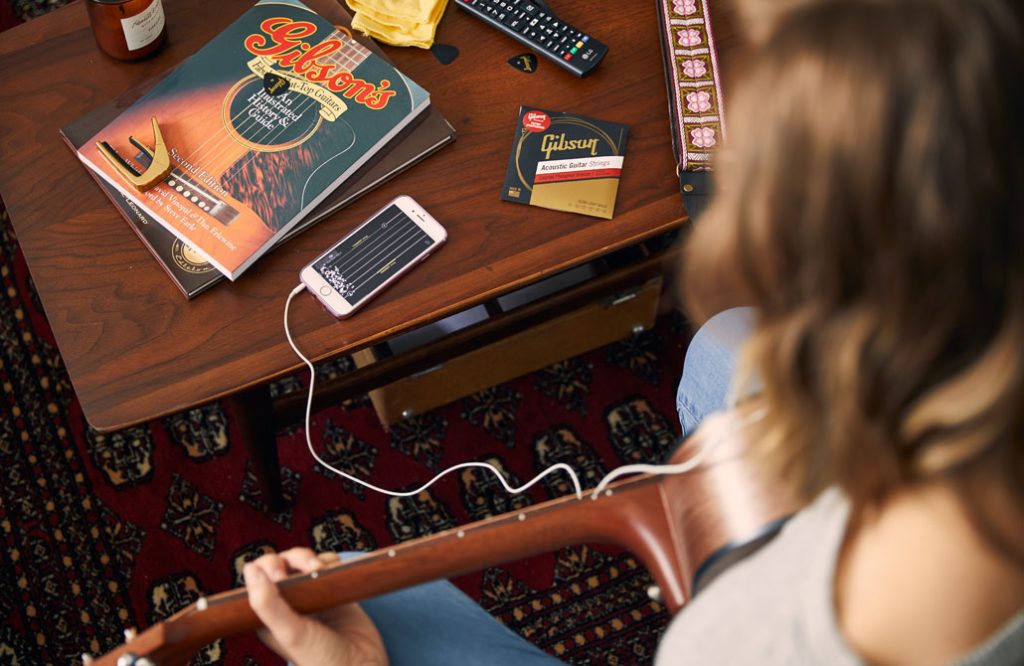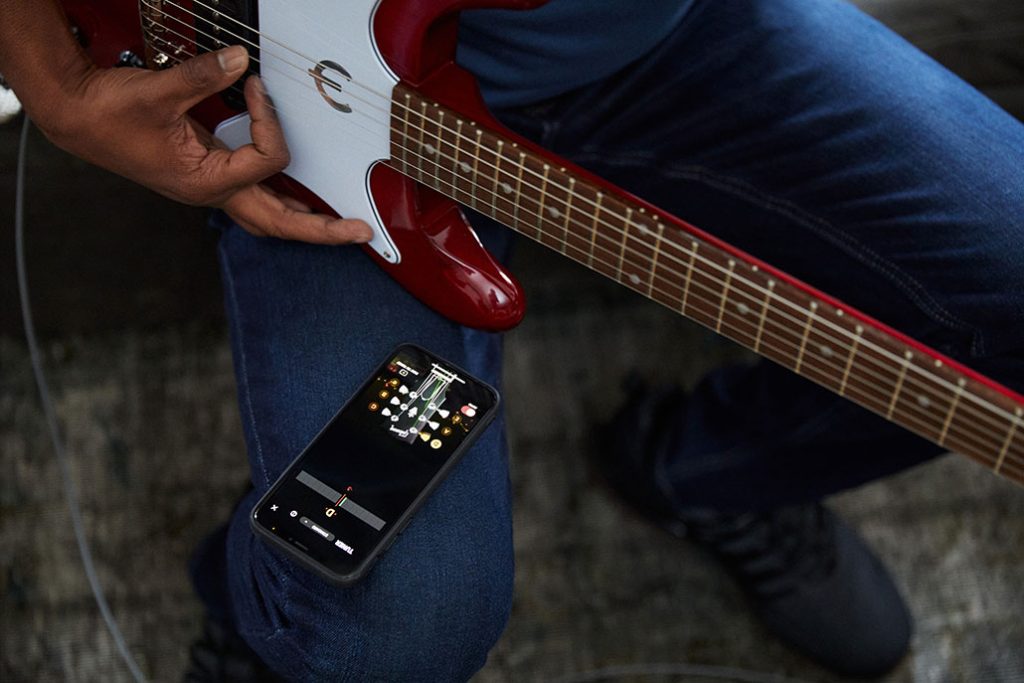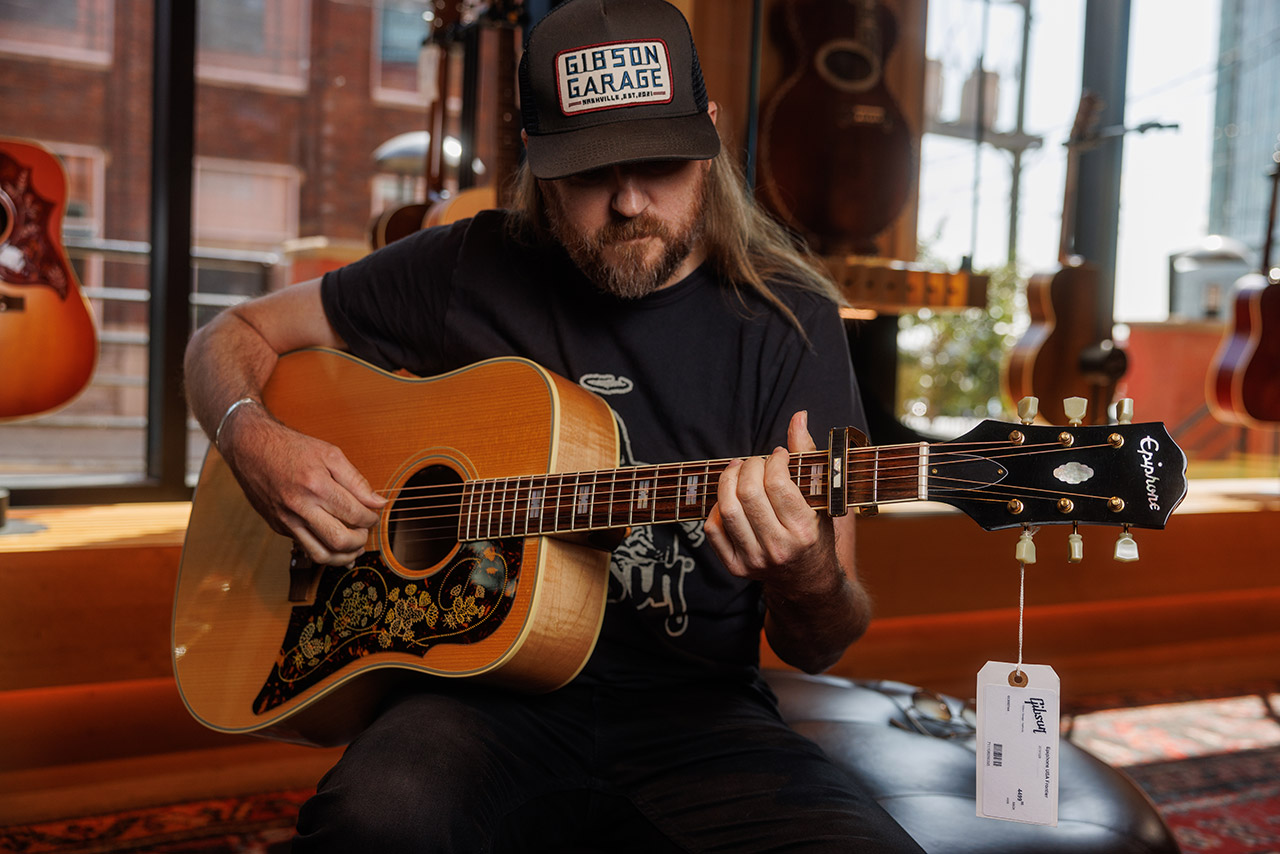Learning guitar is one of many paths to creativity, relaxation, and personal expression
If you’ve been bitten by the music bug, you might be considering picking up and learning the guitar. But how do guitarists learn to shred, strum, and fingerpick with ease?
In this guide, we’re teaching you how to learn guitar. While we won’t be teaching you to play (because that takes much more than a written guide), we’ll break down the steps that will get you to your first jam session, open mic night, or band audition.
Cue the music.

Image: The Gibson app is an all-in-one platform for guitarists, providing educational content, tools, and resources to enhance your learning and playing experience
Setting realistic goals
Before you start formal guitar lessons or self-taught exercises, you should set some goals—both short-term benchmarks and longterm aspirations as you continue playing guitar.
Here are some realistic, short-term achievements to keep on your radar in your early days of learning guitar:
- Memorizing string order – The standard string configuration is the same for both electric and acoustic guitars: EADGBE. You can check out our guide to guitar string order for memorization tips and a string primer.
- Getting comfortable with music theory – Before you start plucking away at your first scale exercises, you should have an idea of what those notes actually mean—understanding guitar scales and guitar theory will help you craft notes into coherent melodies when the time comes. Get a theoretical feel for what scales, harmonies, and chords actually are before you start playing to ground yourself in practical knowledge.
- Memorize your first scale – Scales are critical note patterns that form the basis for complex riffs and simple chords. It doesn’t matter which guitar scale you start with, but consider taking them one at a time. We recommend choosing a song you like, finding out what key it’s in, and learning that scale so that you can learn your first song early in your journey.
These short-term goals will help you reach bigger, longer-term benchmarks, such as:
- Learning your first song – With a few scales and basic open chords at your disposal, you can learn to play your first song. Choose an easy acoustic guitar song for beginners you really like—you’re going to be playing it and hearing it a lot.
- Memorizing scales – Try to memorize as many scales as you can. While they may not be sexy, they’re the foundation of guitar artistry. Even many of the pros practice their scales regularly.
- Training your ear – Listen to recordings of scales to see if you can identify them by ear alone. This takes time for some people, but it’s a highly valuable skill. Being able to tell if a note sounds right is part and parcel of the guitar learning process.
Essential learning tools
If you’re planning on taking the self-taught route and skipping guitar lessons, you’ll need a few key tools to get the fundamentals down:
- The internet – Online resources are a huge advantage for today’s would-be guitarists. Pore over videos on music theory, watch the pros work, and invest time in guitar maintenance demonstrations (such as string changes, cleaning, and more).
- Songbooks – Once you commit a few scales to memory, consider investing in a songbook or two. These will both teach you your favorite tunes and give you a chance to dive headfirst into reading sheet music, guitar tablature, and chord charts.
- Apps – Smartphone apps, such as the Gibson App, are indispensable to today’s musicians. Complete with a guitar tuner, step-by-step skills videos, and practice challenges, The Gibson App is an exceptional tool for newcomers and guitar veterans alike.
Practice routines that work
You can’t just pick up your electric guitar every once in a while and expect to become a pro—mastery takes practice. Adopt a practice routine that works for you by:
- Setting a standing appointment with yourself – Carve out an hour each day on your Google calendar, set reminders on your phone, and do whatever it takes to keep your appointment every day.
- Reward yourself for practicing – Add a new pick to your rotation each time you learn a new scale, buy yourself a new songbook after mastering a new barre chord, or create an old-school sticker chart complete with foil stars—whatever it takes to incentivize regular practice.
- Finding a musician friend – Do you have another friend learning to play guitar? Hold each other accountable for practice; picking up a hobby is much more fun with a friend by your side.

Image: Learning to tune is essential and helps develop your ear
Overcoming common challenges
Learning to play the guitar isn’t easy. You’re sure to encounter challenges, such as:
- Limited practice opportunities – If you work multiple jobs, have family responsibilities, or have other time-consuming hobbies, it might seem hard to carve out time to play. Commitment and consistency are key—even if you only practice for 10 minutes each day, try to stick to your routine.
- Finding equipment – If you pick up an electric guitar, you need an amp to unlock its full potential. It might be easier to learn your favorite song with a capo; you might lose picks left and right. There’s always something to add to your gear arsenal, so we recommend making a prioritized list to protect your wallet.
- Finger fatigue – Playing guitar is great exercise for your hands—but as your calluses are building, playing barre chords or even open chords and single notes might be painful at the beginning of your journey. Take regular breaks and do finger exercises in your downtime to keep your hands conditioned, but remember that minor pain is a very normal part of the process.
Start your guitar journey with Gibson
And there you have it—that’s an overview of how to learn guitar. It may not be easy or fast, but it’s deeply rewarding to learn to play an instrument (especially one as iconic and versatile as the guitar).
The first stop on your journey to musicianship should be Gibson—we’ve been a household name in guitar making for over 130 years, and we create the finest instruments on the market today.
Explore our treasure trove of acoustic and electric guitars and get started.

